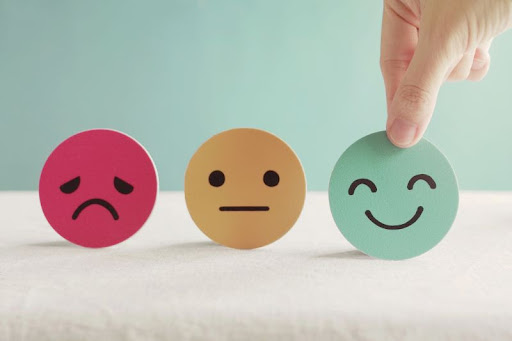
Types of personality tests and their application in business
In business, personality tests are widely used, usually as part of job interviews. In project management, such tests are typically encountered when putting together a project team and selecting the right project manager.
In this article we will review what a personality test is, what the most common types are, and which tests are commonly used in business practice.

What is a personality test?
Even ancient thinkers were concerned with human personality and how to classify different personality types. Hippocrates and Galen, for example, theorised that a preponderance of certain bodily fluids would lead to different personality types with different temperaments. With the development of psychology in the 20th century, there was considerable research into personality, with the research of Kretschmer, Jung and Jaensch providing the basis for modern personality psychology.
In relation to personality and the different personality types, there is a natural need to be able to translate personality into measurable, empirical data. This is the purpose of the various personality tests.
Types of personality tests
There are now many different standardised and validated tests used in psychotherapy, psychoanalysis and in the business field, especially as part of job interviews. Basically, two broad groups or types can be distinguished:
- Objective personality tests
- Projective personality tests
Let's see the difference between the two types!
The objective personality tests
Objective personality tests are usually self-report questionnaires, where the respondent answers statements about him/herself. Often either true or false statements are included in the questionnaire, but there are also tests where responses are given on a scale of several levels. In this case, the individual can answer on a scale from "not at all true" to "absolutely true".
Objective personality tests are based on the assumption that the subject is able to give an authentic and honest account of his or her feelings, thoughts and attitudes, and that this can be used to infer personality traits. However, this assumption is not always true: the subject may often develop resistance, may try to manipulate the test consciously, or may be influenced by his or her mood at the moment and thus the test result.
The best-known objective personality tests are:
- 16PF - Personality Factor Questionnaire: this questionnaire was the first to use factor analysis, and according to its authors (Cattell et al.), personality can be described by 16 factors
- EPQ test: 90 item test, based partly on ancient personality traits (melancholic, sanguine, choleric, phlegmatic) and partly on modern theories. It assumes the presence of a so-called "superversonic" dimension behind the personality
- Big5: is a 5-factor model which is perhaps the most widely recognised and accepted, and was created following criticisms of the 16 PF model.It looks at 5 main factors: extraversion, friendliness, conscientiousness, emotionality, intellect
Tests used in business practice are almost without exception objective tests.

Projective personality tests
Projective personality tests are based on a psychoanalytic approach. They consist of exposing the subject to an open-ended, ambiguous stimulus and analysing his or her response to the stimulus. These personality tests allow access to deeper layers of the personality that would be impossible with tests based on self-attribution.
A further advantage of projective personality tests is that while objective tests often elicit resistance, there is less of a defensive reaction, less of a chance for the subject to influence the outcome of the test. At the same time, these tests are not suited for the identification of specific personality traits, but rather for a global assessment of personality. For this reason, they are mainly used in psychotherapy and are less suitable for business applications.
The main types of projective personality tests:
- Spot analysis procedures: of these, the best known is undoubtedly the Rorschach test, where the individual being tested is asked to observe symmetrical inkblots and say what they remember about them. There are several methods for interpreting the results, the most commonly used in Hungary being the Ferenc Mérei assessment.
- Methods based on word association: here, the patient is presented with a list of stimulus words, including words of high emotional value. The subject associates the words with something, and the content of the words reflecting the association, the individual's reaction time and bodily responses are examined.
- Tests based on thematic perception: here the test person is shown a series of pictures from which a story is to be created and the resulting story is analysed
- Procedures based on the completion of sentences
- Drawing tests: most often a person, a house, an animal, a tree, etc. They draw a drawing of the subject and then analyse it on the basis of its symbolic content and the representational characteristics of the drawing (e.g. line, elaboration, colours)

The most common personality tests at a job interview
There are many different personality tests used in business practice, some of which are officially used, others are Hungarian translations of international tests.
The main disadvantage of the latter tests (apart from their illegal use) is that for the more serious tests, translation is not enough, but naturalisation and professional supervision would be required to take into account Hungarian conditions. This is not the case with simple translations, so the validity of the test results is unfortunately often questionable.
Let's see what tests are the most common in business!
Captain
The Captain is an international ISO-certified test, recognised by the Hungarian Test Committee, which specifically analyses how well the person tested meets the requirements of the job in the following dimensions:
- Attitude to work
- Attitude to driving
- Decision-making ability
- Staff relations
- Capabilities
To take the test, candidates must choose from 200 pairs of statements.
MBTI test (Myers-Briggs type indicators)
It is a decades-old psychological system that has been perhaps the most extensively researched. It defines the personality types created by Jung, based on four dimensions. These dimensions are:
- Extraversion - Introversion: examines the individual's attitude towards the outside world
- Perception - Intuition: examines the way information is gathered and perceived
- Thinking - Feeling: explores the way decisions are made
- Perception - Perception: examines the preferred lifestyle, way of life
The test is completed with yes/no answers, which are then summed up, the percentage of dimensions is given and the respondent is classified into a given personality type.
DISC test
It is one of the most widely used personality tests, and reveals a lot about the personality temperament of the respondent. It basically measures along two dimensions. These two dimensions are extra- or intraversion and relationship or task orientation. It distinguishes 4 basic categories:
- Dominant (D)
- Influencer (I)
- Stable (S)
- Rule following (C)
After completing the DISC test, the results are a textual and two graphical analyses that provide information on the natural (natural behaviour and perceived style (how we respond to the environment. This test does not specifically measure leadership competence.
More about the DISC test What is the DISC test for? We wrote about the DISC model in Personality types.
HOGAN test
This test not only maps personality, but also provides a prediction of a person's expected performance. It assesses the behaviour of the person tested along 7 dimensions:
- Self-regulation: measures confidence, self-esteem and how the individual performs under pressure
- Ambition: leadership ambitions, competition
- Sociability: need for social interaction, extraversion
- Interpersonal sensitivity: empathy, maintaining relationships, tact
- Systematic: responsibility, self-discipline, precision
- Curiosity: interest, creativity
- Attitudes to learning: achievement orientation, attitude to education
Eysenck personality questionnaire
This test is based on two supervisions based on Eysenck's theories, which are theories that fundamentally determine our personality:
- Extraversion - Introversion: yes answers lead to more openness, i.e. extraversion
- Emotional instability: yes answers tilt the result towards emotional instability
Enneagram test
The Enneagram test, which represents the nine-pointed star, is based on mystical rather than scientific principles. It is based on 2 main dimensions. One of these dimensions is emotional energy, which includes anger, attachment and fear. The other dimension is the attitude towards our emotions, measuring the degree of introversion, introversion and denial.
Advice for jobseekers and interviewers
In business practice, there are plenty of personality tests other than the above. The bad news is that as a jobseeker you cannot prepare for these, and although you have the right to refuse to take them, this will obviously not be good for your career. However, the results of the tests are usually known and can teach us a lot about ourselves, so it is worth looking on the positive side of taking the tests.
Interviewers are advised to choose their personality test carefully. Using the wrong test can be illegal, but perhaps even worse if the test does not actually serve your interests, does not measure what you want it to measure and will not select the right candidate.
DO YOU HAVE A QUESTION? CONTACT US!
Would you like to improve your company's operations by developing your own leadership skills? Do you have any other questions about process or project management? Let us do your due diligence and help you develop your management skills.
Contact us for a free consultation!

 Designabc
Designabc